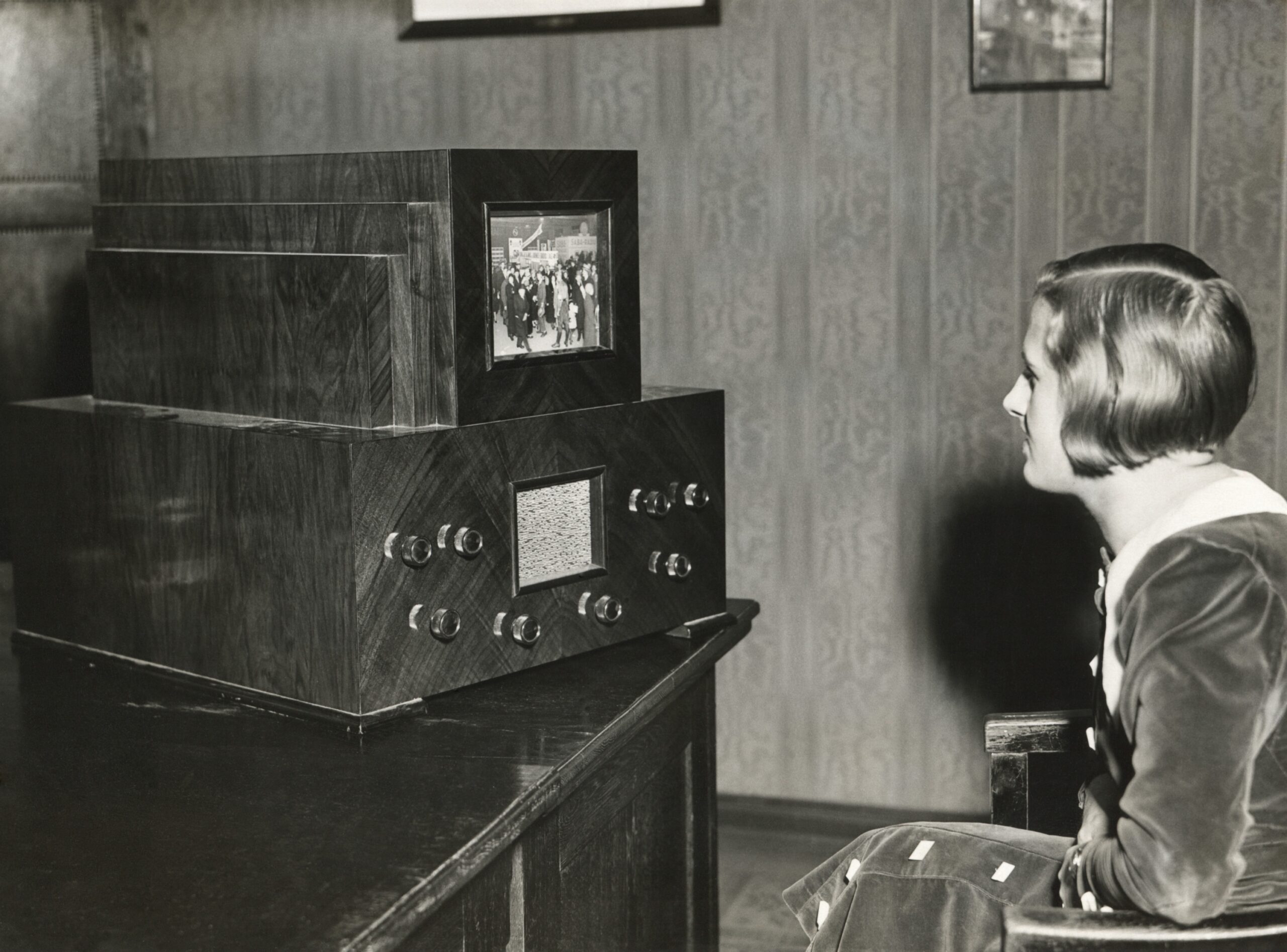Imagine the scene. You are sitting in a darkened room. The curtains are pulled tightly closed – you don’t want any light to come in and spoil the picture. In the corner of the room, a big wooden box with a small screen glows. Chairs are pulled up close to be able to see what’s on the screen. All the neighbours are in the room because very few people have a television yet. It’s in black and white, and only on for a few hours a day. There is only one channel: the BBC.

TV was first broadcast in 1936, but was suspended during World War Two. It started up again in 1946, but it was the coronation of Queen Elizabeth II in 1953 that provided the big stimulus to get a TV. The whole ceremony – which was seven hours’ long – was shown live. Most televisions were rented then because they were far too expensive for ordinary people to buy. Broadcasting hours were strictly controlled by the government: programmes could only be shown between 9am and 11pm, and only two hours of programmes were allowed each day before 1pm. There were no programmes at all between 6pm and 7pm – some parents even persuaded their children that the TV was finished so it was time for bed at 6pm!
Gradually things began to change. In 1955, ITV began, financed by adverts. You needed an adapter box to receive the new channel. By 1957, viewers were spending on average 40% of their evening in front of the television. A new art form – TV dinners – appeared as people ate in front of their favourite programmes! In 1964 BBC2 started and viewers now had a choice of three channels. Wimbledon was the first programme to be shown in colour and in 1967, BBC2 started to broadcast regularly in colour. In the 1980s Channel 4 and Satellite TV began, and in 1988 24-hour TV started.
In the early days of television, cameramen filmed an event in another country and sent the film back to England by aeroplane to be processed before it could be broadcast a day or two after the event had happened. Nowadays, we can see events anywhere in the world almost instantaneously. You can watch subscription satellite and cable television, Freeview, digital, online, on demand and catch-up! There are hundreds and hundreds of channels to choose from – specialist news channels, sports channels, cookery channels, film channels, whatever you want. And still we complain that we can’t find anything to watch on TV!

Today, instead of the little screen in the corner of the room we are just as likely to have a huge screen on the wall, showing programmes in high definition and with stereo sound. Modern televisions can be used as computers, can download data, can even be used as cinema screens. Things have changed a great deal since the 1950s[1] when we felt ourselves lucky to have the choice of two black and white television channels for a few hours each day.
[1] Television and broadcasting is a great example of changes within living memory: take a look at the pictures in this article about the development of television since 1925. It has been 9 years since this article was published – how are televisions different now?




